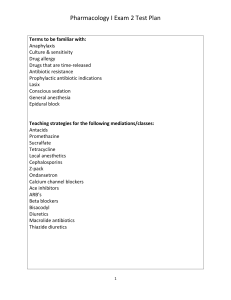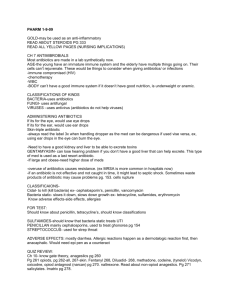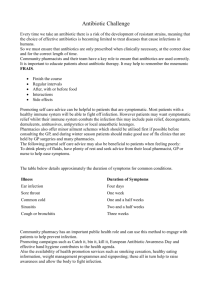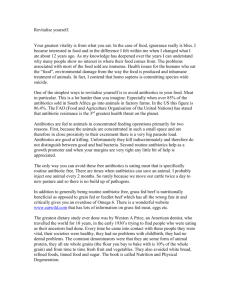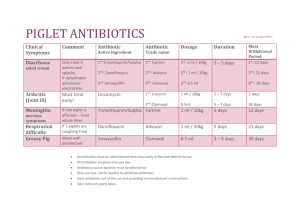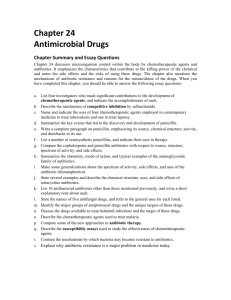Digitized Occlusion- using something old with something new
advertisement
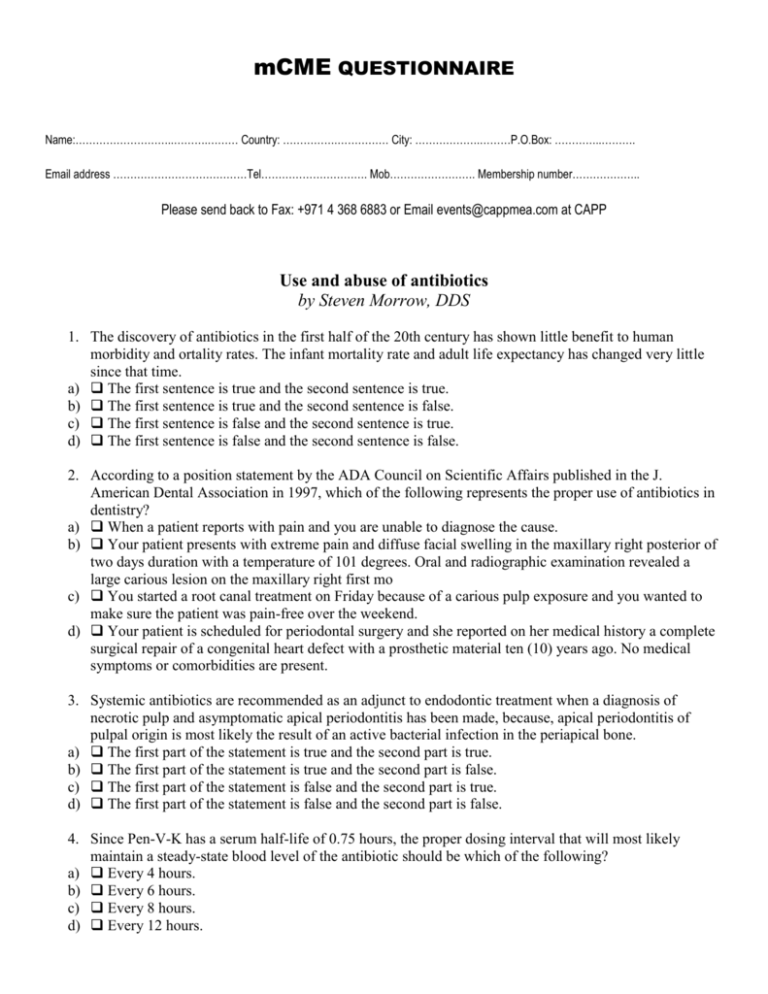
mCME QUESTIONNAIRE Name:………………………..……….……… Country: …………….…………… City: ……………….………P.O.Box: …………..………. Email address …………………………………Tel…………………………. Mob……………………. Membership number……………….. Please send back to Fax: +971 4 368 6883 or Email events@cappmea.com at CAPP Use and abuse of antibiotics by Steven Morrow, DDS 1. The discovery of antibiotics in the first half of the 20th century has shown little benefit to human morbidity and ortality rates. The infant mortality rate and adult life expectancy has changed very little since that time. a) The first sentence is true and the second sentence is true. b) The first sentence is true and the second sentence is false. c) The first sentence is false and the second sentence is true. d) The first sentence is false and the second sentence is false. 2. According to a position statement by the ADA Council on Scientific Affairs published in the J. American Dental Association in 1997, which of the following represents the proper use of antibiotics in dentistry? a) When a patient reports with pain and you are unable to diagnose the cause. b) Your patient presents with extreme pain and diffuse facial swelling in the maxillary right posterior of two days duration with a temperature of 101 degrees. Oral and radiographic examination revealed a large carious lesion on the maxillary right first mo c) You started a root canal treatment on Friday because of a carious pulp exposure and you wanted to make sure the patient was pain-free over the weekend. d) Your patient is scheduled for periodontal surgery and she reported on her medical history a complete surgical repair of a congenital heart defect with a prosthetic material ten (10) years ago. No medical symptoms or comorbidities are present. 3. Systemic antibiotics are recommended as an adjunct to endodontic treatment when a diagnosis of necrotic pulp and asymptomatic apical periodontitis has been made, because, apical periodontitis of pulpal origin is most likely the result of an active bacterial infection in the periapical bone. a) The first part of the statement is true and the second part is true. b) The first part of the statement is true and the second part is false. c) The first part of the statement is false and the second part is true. d) The first part of the statement is false and the second part is false. 4. Since Pen-V-K has a serum half-life of 0.75 hours, the proper dosing interval that will most likely maintain a steady-state blood level of the antibiotic should be which of the following? a) Every 4 hours. b) Every 6 hours. c) Every 8 hours. d) Every 12 hours. mCME QUESTIONNAIRE Name:………………………..……….……… Country: …………….…………… City: ……………….………P.O.Box: …………..………. Email address …………………………………Tel…………………………. Mob……………………. Membership number……………….. Please send back to Fax: +971 4 368 6883 or Email events@cappmea.com at CAPP 5. Your patient is scheduled for an extraction of tooth #19 as the result of a vertical root fracture. You were aware that he had a cardiac transplant five years ago. After extracting the tooth, you discover that he had recently been diagnosed with heart valve pathology. What should you do? a) Nothing, it’s too late. b) Call the paramedics. c) Prescribe the appropriate antibiotic and dosage as you would for premedication and have him take it within two hours of treatment. d) Prescribe an antibiotic regimen that will last for three days. Evaluation Form This represented new knowledge: None Some Moderate New Did the article meet your learning objectives? Yes No Was the article relevant to the topic? Yes No Did the article meet your expectations? Yes No In order to serve you better, we would like to know your preferred topics for the next issues: ……………………………………………………………………………………………………………………………………………………………



